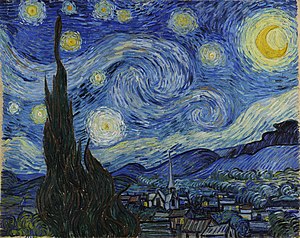
Psychosis

Psychosis is an abnormal condition of the mind that results in difficulties determining what is real and what is not. Symptoms may include false beliefs (delusions) and seeing or hearing things that others do not see or hear (hallucinations). Other symptoms may include incoherent speech and behavior that is inappropriate for the situation. There may also be sleep problems, social withdrawal, lack of motivation, and difficulties carrying out daily activities.Men ought to know that from the brain, and from the brain only, arise our pleasures, joys, laughter, and jests, as well as our sorrows, pains, griefs and tears. Through it, in particular, we think, see, hear, and distinguish the ugly from the beautiful, the bad from the good, the pleasant from the unpleasant…. It is the same thing which makes us mad or delirious, inspires us with dread and fear, whether by night or by day, brings sleeplessness, inopportune mistakes, aimless anxieties, absentmindedness, and acts that are contrary to habit.The model presented here is based on incomplete knowledge related to dopamine, schizophrenia, and antipsychotics—and as such will need to evolve as more is known about these. Psychosis is an abnormal condition of the mind that results in difficulties determining what is real and what is not. Symptoms may include false beliefs (delusions) and seeing or hearing things that others do not see or hear (hallucinations). Other symptoms may include incoherent speech and behavior that is inappropriate for the situation. There may also be sleep problems, social withdrawal, lack of motivation, and difficulties carrying out daily activities. Psychosis has many different causes. These include mental illness, such as schizophrenia or bipolar disorder, sleep deprivation, some medical conditions, certain medications, and drugs such as alcohol or cannabis. One type, known as postpartum psychosis, can occur after giving birth. The neurotransmitter dopamine is believed to play a role. Acute psychosis is considered primary if it results from a psychiatric condition and secondary if it is caused by a medical condition. The diagnosis of a mental illness requires excluding other potential causes. Testing may be done to check for central nervous system diseases, toxins, or other health problems as a cause. Treatment may include antipsychotic medication, counselling, and social support. Early treatment appears to improve outcomes. Medications appear to have a moderate effect. Outcomes depend on the underlying cause. In the United States about 3% of people develop psychosis at some point in their lives. The condition has been described since at least the 4th century BCE by Hippocrates and possibly as early as 1,500 BCE in the Egyptian Ebers Papyrus. A hallucination is defined as sensory perception in the absence of external stimuli. Hallucinations are different from illusions and perceptual distortions, which are the misperception of external stimuli. Hallucinations may occur in any of the senses and take on almost any form. They may consist of simple sensations (such as lights, colors, sounds, tastes, or smells) or more detailed experiences (such as seeing and interacting with animals and people, hearing voices, and having complex tactile sensations). Hallucinations are generally characterized as being vivid and uncontrollable. Auditory hallucinations, particularly experiences of hearing voices, are the most common and often prominent feature of psychosis. Up to 15% of the general population may experience auditory hallucinations. The prevalence in schizophrenia is generally put around 70%, but may go as high as 98%. During the early 20th century, auditory hallucinations were second to visual hallucinations in frequency, but they are now the most common manifestation of schizophrenia, although rates vary between cultures and regions. Auditory hallucinations are most commonly intelligible voices. When voices are present, the average number has been estimated at three. Content, like frequency, differs significantly, especially across cultures and demographics. People who experience auditory hallucinations can frequently identify the loudness, location of origin, and may settle on identities for voices. Western cultures are associated with auditory experiences concerning religious content, frequently related to sin. Hallucinations may command a person to do something potentially dangerous when combined with delusions. Extracampine hallucinations are auditory hallucinations originating from a particular body part (e.g., a voice coming from a person's knee). Visual hallucinations occur in roughly a third of people with schizophrenia, although rates as high as 55% are reported. Content frequently involves animate objects, although perceptual abnormalities such as changes in lighting, shading, streaks, or lines may be seen. Visual abnormalities may conflict with proprioceptive information, and visions may include experiences such as the ground tilting. Lilliputian hallucinations are less common in schizophrenia, and occur more frequently in various types of encephalopathy (e.g., Peduncular hallucinosis). A visceral hallucination, also called a cenesthetic hallucination, is characterized by visceral sensations in the absence of stimuli. Cenesthetic hallucinations may include sensations of burning, or re-arrangement of internal organs.
